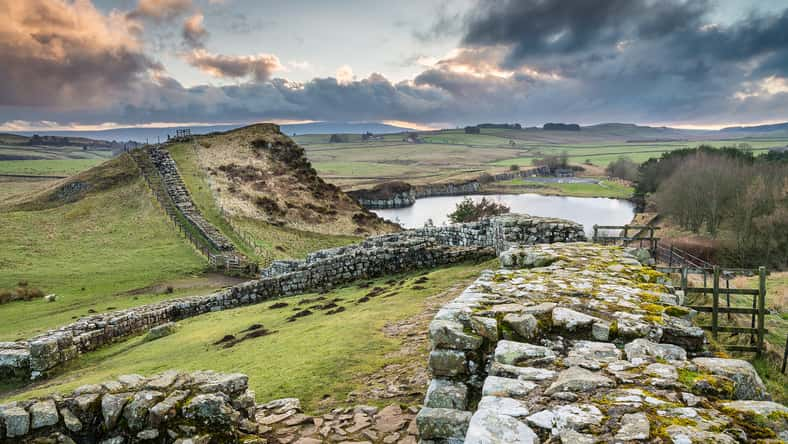Archaeologists Discovered Bedbugs At A First-Century Roman Fort In England Near Hadrian’s Wall

For at least 1,900 years, bedbugs have caused suffering and distress in Britain. Archaeologists discovered evidence of the bloodsucking insects at a first-century Roman fort near Hadrian’s Wall in England.
Hadrian’s Wall divided Roman Britannia and the unconquered territory of Caledonia to the north. Its construction began in A.D. 122 during the reign of Emperor Hadrian.
The wall is one of the best-known and most important defensive fortifications of the Roman Empire. Parts of the wall can still be seen for many miles.
A graduate student of archaeology at University College Dublin named Katie Wyse Jackson made the bedbug discovery while analyzing the remains of ancient insects at the fort, which is called Vindolanda.
She found two midsections from bedbugs at the lowest layers of the fort. Vindolanda was built in the late first century but has experienced several remodels over the years.
The finding supports the theory that Romans introduced bedbugs to Britain following their invasion of the isle in A.D. 43.
Signs of bedbugs were detected in other areas of England as well, such as a Roman settlement in Warwickshire dating back to somewhere around the latter half of the second century and several ancient Roman sites across Europe.
Compared to most other civilizations, the Romans were sticklers about hygiene and were known to bathe frequently.
They built public bathing facilities that gave citizens of all classes a chance to relax, clean themselves, and mingle with each other.

drhfoto – stock.adobe.com – illustrative purposes only
However, a study in 2016 from the journal Parasitology showed that Roman archaeological sites contained just as many bedbugs as Viking and medieval ones, highlighting the difficulties of eliminating these pests.
In August of 2023, Wyse Jackson excavated soil samples from layers that dated from A.D. 100 to 105. She then used a mixture of paraffin wax and water to draw out the insect remains.
“Insects are preserved extremely well in waterlogged material,” she explained in a blog post for Vindolanda Charitable Trust.
“When the water is added, insects are more likely to float to the surface, allowing for the collection of as many insects as possible.”
The analysis of insect remains could also provide researchers with more information about the activities that occurred in the region.
From the species that were present, they could learn about trade, hygiene, food storage, and waste disposal practices of the people back then.
It isn’t clear how bedbugs made the trek to Britain with the Romans, but they may have hitched a ride on the straw mattresses, clothes, and grain that the Romans brought over with them.
These items would have provided the perfect hiding spots for bedbugs to burrow into and stay safe during the journey.
Bedbugs have been around a lot longer than ancient Rome. The parasitic, wingless insects have persisted for millennia, emerging during the age of the dinosaurs around 115 million years ago.
Researchers are not sure what their first host was, but they think it was most likely an animal, such as a pterosaur, that laid its eggs in a nest.
Sign up for Chip Chick’s newsletter and get stories like this delivered to your inbox.
More About:News





